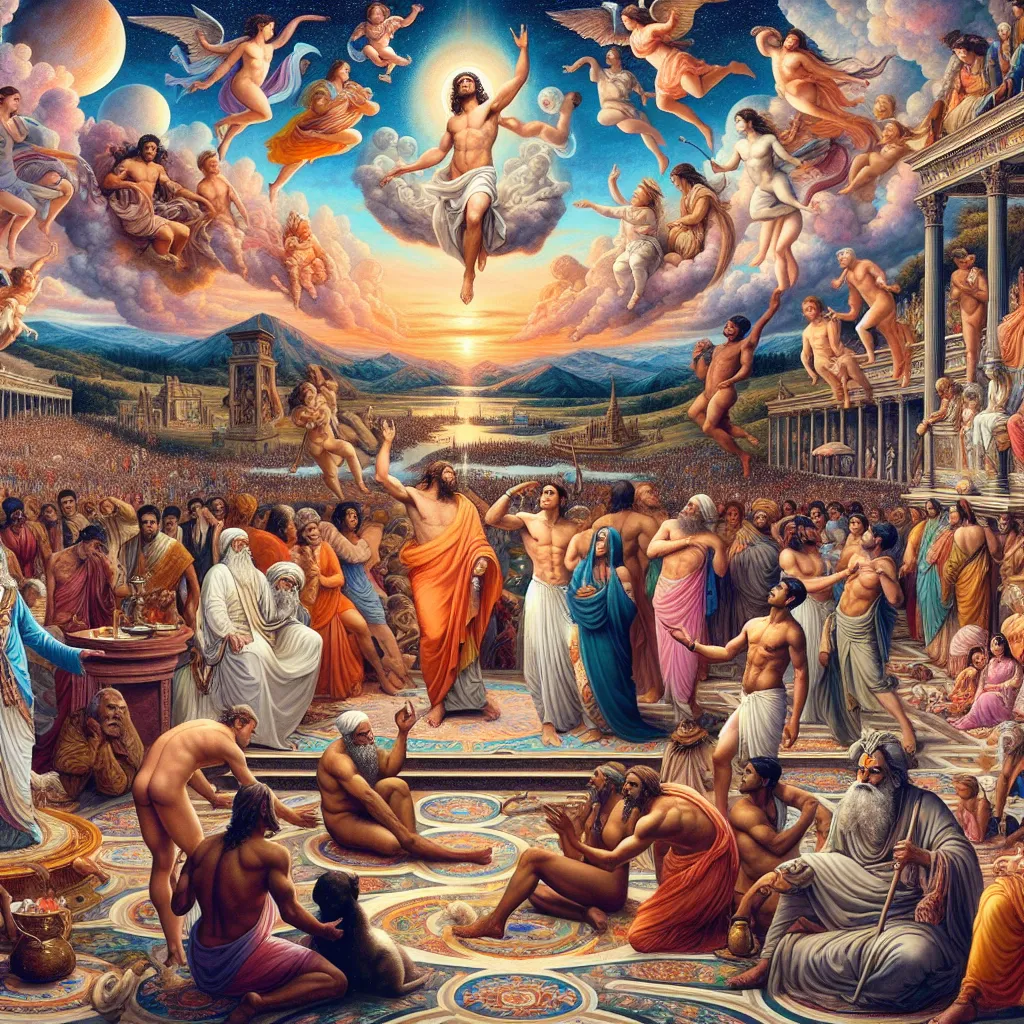
- Published on
- Authors

- Name
- You
Rituals and Festivals in Hinduism: Celebrations of Divine Presence
Hinduism, one of the most ancient and diverse religions, is imbued with a plethora of festivals and rituals that celebrate the divine presence in everyday life. These celebrations not only mark significant events in the spiritual calendar but also foster a sense of community, continuity, and cultural identity. Blending advanced scientific insights with mystical wisdom, Hindu rituals and festivals embody a unique symbiosis of the tangible and the transcendental.
Major Hindu Festivals and Their Significance
1. Diwali - The Festival of Lights
Diwali, perhaps the most well-known Hindu festival, symbolizes the victory of light over darkness and good over evil.
| Occasion | Significance |
|---|---|
| Lord Rama's Return | Celebrates Lord Rama's return to Ayodhya |
| Goddess Lakshmi | Worship of the goddess of wealth and prosperity |
| New Year | Marks the Hindu New Year in many regions |
During Diwali, homes are illuminated with oil lamps, vibrant rangoli designs adorn doorsteps, and families exchange gifts and sweets. Scientifically, the festival also represents a time to cleanse and refresh homes, readying the environment for new beginnings.
2. Holi - The Festival of Colors
Holi heralds the arrival of spring and celebrates the divine love of Radha and Krishna.
| Element | Symbolism |
|---|---|
| Color Throwing | Unity and joy transcending social norms |
| Bonfires (Holika Dahan) | Victory of good (Prince Prahlad) over evil (Holika) |
Holi’s vibrant colors are not just symbolic but also scientifically beneficial, with natural colors often harvested from spring blooms and Ayurvedic herbs stimulating physical and mental health.
3. Navaratri - Nine Nights of Divine Feminine
Navaratri is a vibrant festival dedicated to the worship of the feminine divine in her myriad forms.
| Day | Deity | Aspect Celebrated |
|---|---|---|
| 1-3 | Goddess Durga | Power and strength |
| 4-6 | Goddess Lakshmi | Wealth and prosperity |
| 7-9 | Goddess Saraswati | Wisdom and learning |
The scientific aspect of Navaratri involves the arrival of a new seasonal cycle, encouraging fasting and meditation to enhance physical detoxification and mental clarity, syncing with the natural rhythms of the body and environment.
Shared Rituals: Uniting the Sacred and the Scientific
Hindu rituals often embody sophisticated practices that align both spiritual and practical elements.
Yoga and Meditation
Rooted in Vedic traditions, yoga and meditation find a significant place in daily rituals.
| Practice | Spiritual Aim | Scientific Benefit |
|---|---|---|
| Yoga Asanas | Channeling energy and connecting with the self | Physical fitness, flexibility, stress reduction |
| Pranayama | Control of breath, life force regulation | Improved respiratory function, mental calm |
| Meditation | Mental clarity, spiritual awakening | Reduced anxiety, enhanced concentration |
Aarti and Mantra Chanting
Daily aarti and mantra chanting serve as powerful reminders of divine presence.
| Ritual | Purpose | Cognitive Impact |
|---|---|---|
| Aarti (Fire Ritual) | Offering light to deities, purification | Focus enhancement, sense of communal unity |
| Mantra Chanting | Invocation of divine energy, mental clarity | Modulation of brain waves, stress reduction |
Concluding Thoughts
Hindu festivals and rituals epitomize a rich tapestry where the mystical seamlessly intertwines with scientific principles. These celebrations of divine presence serve not just as religious observances but as comprehensive life practices that nurture mental, physical, and spiritual well-being. By embracing both ancient wisdom and contemporary understanding, they remain ever-relevant in fostering holistic harmony in the modern world.
